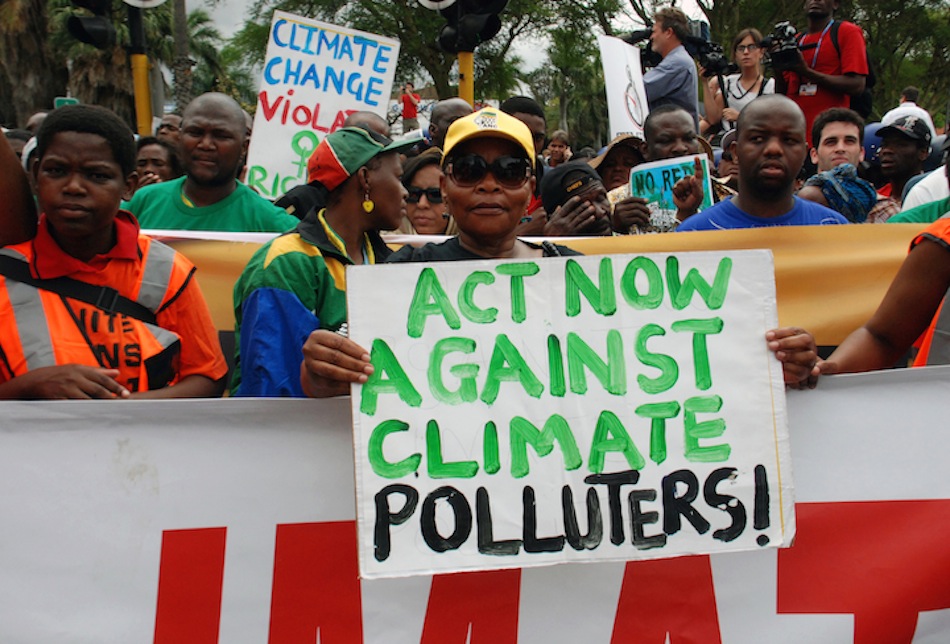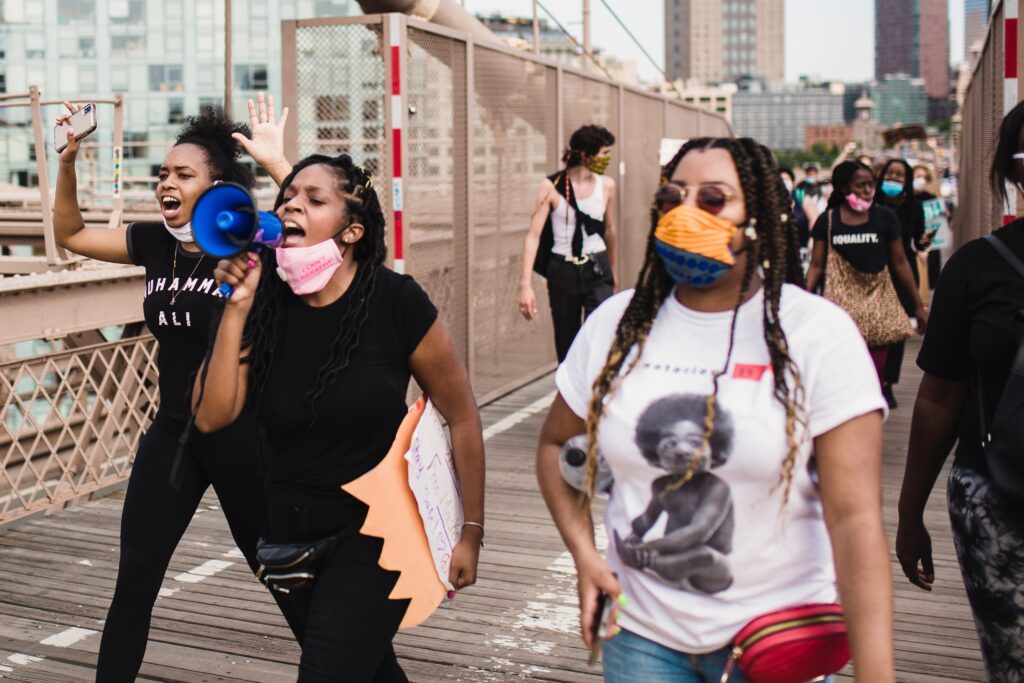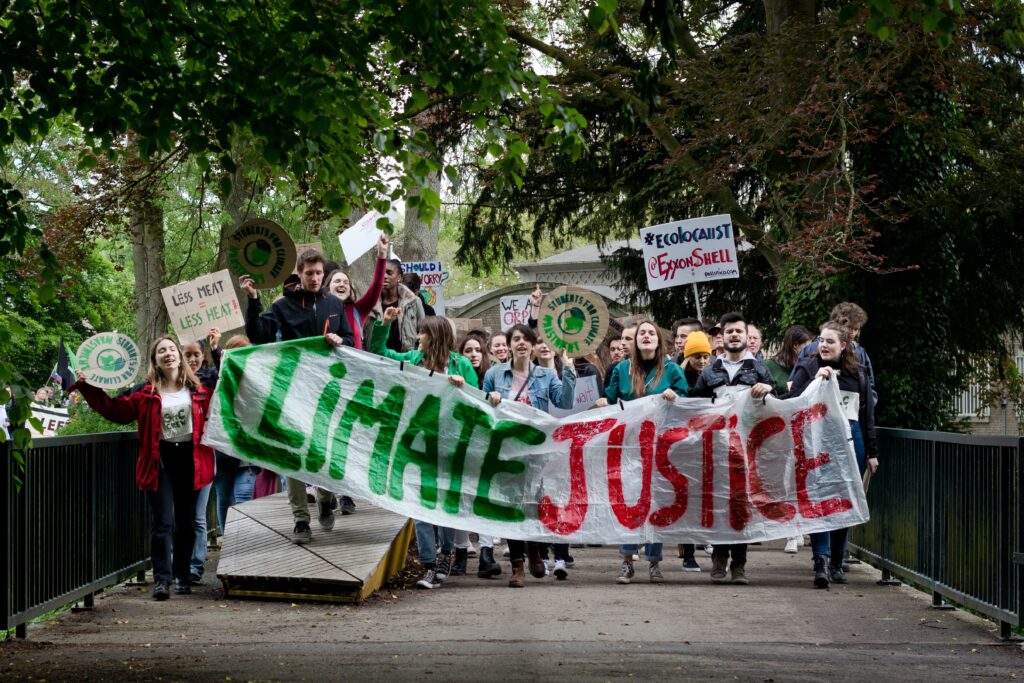“All climate justice work is climate work, but not all climate work is climate justice work.”
– Kumi Naidoo, Former Secretary General of Amnesty International
In recent years, there have been significant changes in the manner in which we discuss the climate crisis. For a very long time, people thought of global warming primarily as an environmental issue. They would see wildfires, floods, and other extreme weather, and they would hear people calling to “save the world,” “save the rainforest,” and “save the polar bears.”
We now see that the dilemma is also fundamentally a human one; that “the environment” is not some specialised subject that can be easily dissociated from human concerns; and that not only the polar bears but also ourselves are in danger.
The climate crisis is both a human and a political crisis, thus any solutions to it must take into account the tangled and complicated world of international politics.
The idea of climate justice acknowledges that, despite the fact that global warming is a worldwide concern, its impacts are not felt equally everywhere. Extreme heat, flooding, and crop failures are just a few of the terrible effects of the climate crisis that are disproportionately faced by countries. Additionally, climate justice acknowledges that not everyone shares responsibility for bringing about the catastrophe we are currently facing.
The places (global south) that are currently experiencing the effects of global warming hold little to no historical guilt for producing it, which is an appalling perversion of justice. Instead, the wealthy nations of the global north are primarily at fault since they abused fossil resources to fund their industrial expansion.
For instance, as of December 2021, only one nation, the United States, is accountable for more than 25% of all carbon emissions to date, whereas Africa as a whole only accounts for 3%. Similarly, despite contributing only about 1% of global emissions now, the UK has had a significant historical impact. It was responsible for more than half of all carbon emissions in the world up to 1882.

Even this grossly unfair image doesn’t fully convey the extreme unfairness of historical carbon emissions because a large portion of the CO2 attributable to low and middle-income countries is actually released to meet consumer demand in high-income countries. If these outsourced emissions were taken into account, it has been suggested that the UK’s “actual” carbon footprint might be up to twice as large as it is now. This diminishes the impact of the UK’s much-heralded accomplishment in lowering carbon emissions since 1990.
Climate Justice is a Civil Right Issue.
Justice for the environment and the climate is a civil rights issue. We are all reliant on the natural world and everything that it provides. The water, food, and lungs of members of communities are contaminated by mercury, arsenic, lead, and other pollutants released by toxic facilities including coal-fired power stations and incinerators.
In Port Harcourt Nigeria, where soot commonly affects people’s health and resources, a test was conducted by Premium Times, to evaluate water samples from Rumuagholu and Nonwa in Ogoni, and the test was carried out at the Standards Organization of Nigeria for laboratory analysis.
The analysis’s findings showed that the majority of the water used in soot-covered areas did not adhere to the minimum standards for drinkable water. Based on the findings, access to clean water has been cut out because of the heavy soot pollution and people’s health has been greatly affected due to the intensity of the pollution.
The concept of “climate justice” places an ethical dilemma at the centre of the case for taking action on climate change. It ties climate change to other problems like increasing global inequality by characterising it as a symptom of unfair and unrepresentative social, political, and economic systems.
To achieve climate justice we must have environmental justice. Environmental justice is that the weight of the climate crisis is not placed on underprivileged populations. Instead, when making environmental decisions that will affect kids, they are supported and given input.
READ ALSO: CLIMATE APATHY IN NIGERIA
Giving funding to support community organising, opposing fossil fuels, and other initiatives led by women and people of colour with the goal of 100% renewable energy and accessibility to clean water, soil, and air for all are a few examples of environmental justice. Many people and communities most at risk from environmental deterioration and climate change are already poor and largely unaffected by the benefits of global economic activity.
Additionally, there is an unequal distribution of blame for human-caused climate change, with the majority of historical emissions coming from the wealthiest nations with the most resources and potential for climate change adaptation.
Young people in action
In the past, youth have taken the lead in the fight against racial, social, and environmental injustice. But during the past few years, they have become more active than ever on the subject of climate justice. Globally, millions of kids and teenagers expressed their worries and urged their governments to act on climate change. Their voices have expressed the sense of urgency they have about the fact that time is running out and that younger generations will be more severely affected by climate change than older generations have been. Children born in the twenty-first century are already experiencing the effects of climate change.
In addition to the daily impacts of climate change on air quality, airborne sickness, and filthy water, they are more susceptible to the effects of climate disasters, such as floods and high winds. 149 million children worldwide suffer stunted growth as a result of drought and flood damage. The World Bank estimates that the effects of climate change might push an extra 100 million people into extreme poverty by the time many of today’s young climate activists are in their late 20s. The International Food Policy Research Institute predicts that by 2050, there would be 20% more malnourished children than there would be in the absence of climate change.

Climate justice entails fusing development, environmental protection, and human rights. Development and climate action are inextricably connected. A human rights-based perspective is required throughout. For instance, given the speed of urbanisation, a rights-based strategy is essential to address issues of water, sanitation, and health, which are made worse by climate change as informal settlements are formalised. A people-centred approach to climate action is another aspect of climate justice.
This means making sure that the rights of people who are most susceptible to the effects of climate change are represented, included, and protected. To ensure that young people can live, learn, play, and work in healthy and clean settings, solutions must promote equity, provide access to essential resources, and ensure these conditions. Understanding that not everyone has contributed equally to climate change is necessary for achieving climate justice. While everyone must participate in combating climate change, the responsibility shouldn’t fall mostly on those who have made the smallest contributions. Despite population and energy consumption growth, the world’s richest 10% are responsible for 50% of GHG emissions and the poorest 50% only for 10%.
Fighting for climate justice entails addressing issues of intergenerational injustice, economic injustice, gender injustice, and social injustice. To address these issues comprehensively, it is necessary to recognise the intersectionality of these problems. For instance, when local residents are uprooted to make way for conservation or renewable energy effort, some climate projects unintentionally contribute to climate injustices.
Climate justice requires a systems transformation. The system that favours profit over sustainability is to blame for the climate crisis. As a result, finding answers will call for a revolutionary systems vision and methodology that realign the economy with natural systems and deal with the unfair responsibilities placed on some communities.
Author: Seyi Afolabi

